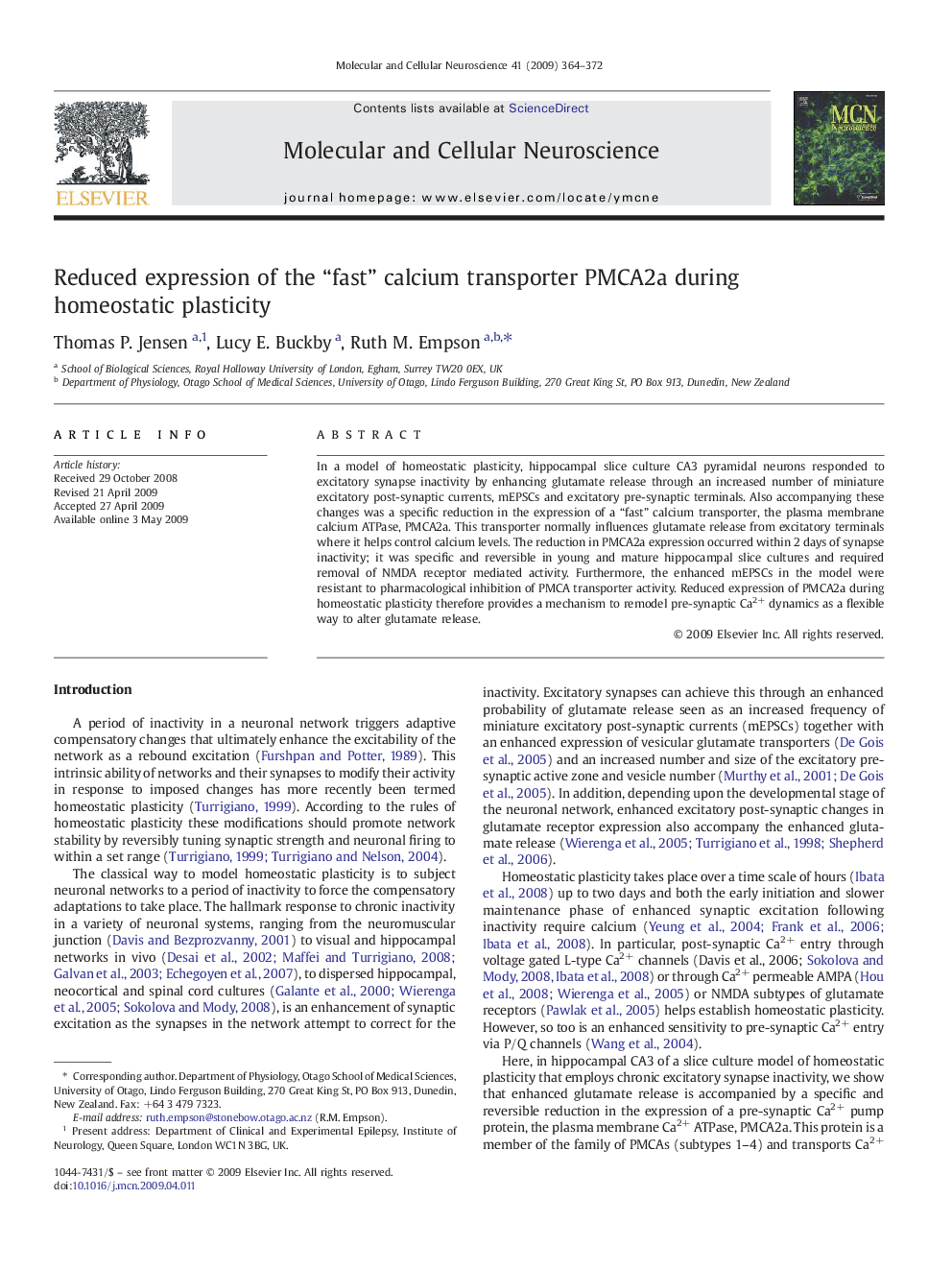| Article ID | Journal | Published Year | Pages | File Type |
|---|---|---|---|---|
| 2198943 | Molecular and Cellular Neuroscience | 2009 | 9 Pages |
In a model of homeostatic plasticity, hippocampal slice culture CA3 pyramidal neurons responded to excitatory synapse inactivity by enhancing glutamate release through an increased number of miniature excitatory post-synaptic currents, mEPSCs and excitatory pre-synaptic terminals. Also accompanying these changes was a specific reduction in the expression of a “fast” calcium transporter, the plasma membrane calcium ATPase, PMCA2a. This transporter normally influences glutamate release from excitatory terminals where it helps control calcium levels. The reduction in PMCA2a expression occurred within 2 days of synapse inactivity; it was specific and reversible in young and mature hippocampal slice cultures and required removal of NMDA receptor mediated activity. Furthermore, the enhanced mEPSCs in the model were resistant to pharmacological inhibition of PMCA transporter activity. Reduced expression of PMCA2a during homeostatic plasticity therefore provides a mechanism to remodel pre-synaptic Ca2+ dynamics as a flexible way to alter glutamate release.
